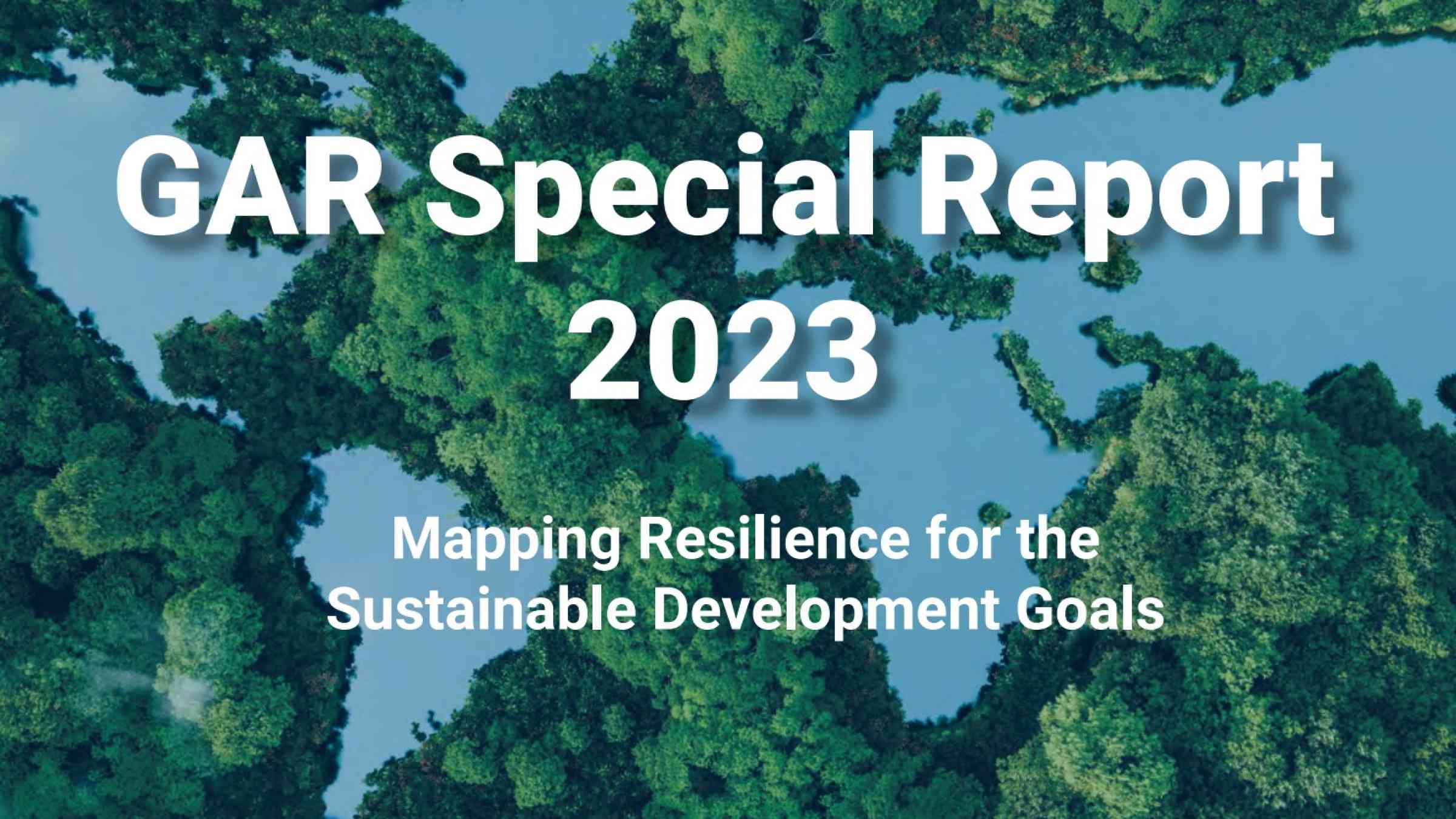New report shows climate disasters are reversing global development at unprecedented rates

Social and economic advances are being undone by disasters and their knock-on effects on food security, employment and education.
New York, 11 July 2023 – Growing disaster risks and a confluence of shocks are creating domino effects across economies and undermining sustainable development on all fronts, according to a new report by the United Nations.
A special edition of the Global Assessment Report (GAR 2023), released by the UN Office for Disaster Risk Reduction (UNDRR) during the UN High-level Political Forum on Sustainable Development, finds hard-won economic and development gains are in danger from the growing number of disasters with global warming the prime contributor.
The GAR 2023 presents a new analysis mapping how disasters like drought are dramatically rising with knock effects on global food security, employment and education. Droughts have already resulted in two billion people now living under water stress and an 80% increase in the risk of crop failure and hunger in sub-Saharan Africa and South East Asia.
The impacts cascade onto the labour market as temperatures rise and it simply becomes too hot to work. Labour productivity is halved at 34°C and the equivalent of an estimated 80 million full-time jobs will be lost if the world surpasses 1.5°C of warming, pushing ever greater numbers of people into poverty.
Heatwaves, often referred to as the ‘silent killer of climate change,’ are increasing and are among the most impactful of hazards, particularly in tropical and subtropical climates such as India. In 2020 UNICEF estimated that 820 million children were already exposed to heatwaves.
Climate impacts also led to 920 million children being exposed to water scarcity in 2020, a major hazard driving displacement. Last year, extreme weather events, such as the Pakistan floods and the Horn of Africa drought, left 12 million children homeless, in countries with some of the world’s lowest literacy rates.
“The findings are a devastating indictment of climate inaction which is leaving billions of people behind. We risk an unlivable future if we don’t start seriously investing in resilience,” said Ms. Mami Mizutori, the Special Representative of the UN Secretary-General for Disaster Risk Reduction and the head of UNDRR.
“This report demonstrates that action is possible in every region. Both to reduce risk and create positive feedback loops. But it shows that countries must transform how they measure, understand and act on risk. And invest in prevention, resilience and adaptation,” said Ms. Amina Mohammed, the Deputy Secretary-General of the UN.
GAR2023 highlights how resilience can be strengthened so that communities can better withstand and respond to shocks. This includes investments in early warning systems where the benefits triple in vulnerable contexts because of their proven ability to reduce damage.
In East and North-East Asia, for instance, disaster losses would be reduced by an estimated US$67 billion a year. The report also offers examples that countries can learn from such as the Cidanau Watershed in Indonesia which introduced payments to farmers to conserve biodiversity and fresh water supplies.
“The increasing complexity of the world means that risks and measures of development cannot be siloed. If we want to prevent future disasters and crises, a holistic approach is needed to address connected risks and how they influence the outcomes that we care about. This report shows how we do this across a number of areas from food and energy security to alleviating poverty,” said Ms. Loretta Hieber Girardet, Chief of UNDRR’s Risk Knowledge, Monitoring and Capacity-Development Branch, whose team led the development of the report.
The report, Mapping Resilience for the Sustainable Development Goals, was developed over two years with the involvement of over 90 authors and experts from the UN, research institutions, and government agencies, including the UN Development Programme (UNDP) and the US National Aeronautics and Space Administration (NASA). It calls for resilience to be the bedrock of efforts to achieve the Sustainable Development Goals. The report comes ahead of the September SDG Summit where countries will assess progress to date and set out commitments to accelerate action.
Notes to editors
About the UN Office for Disaster Risk Reduction (UNDRR)
UNDRR is the lead agency in the United Nations on disaster risk reduction. It provides leadership, expertise and tools to enable governments, intergovernmental organisations, civil society and the private sector to better understand and reduce risks before they become disasters. UNDRR’s work is guided by the Sendai Framework for Disaster Risk Reduction 2015-2030, which aims to achieve a substantial reduction in disaster risk and losses by the year 2030.
About the Global Assessment Report on Disaster Risk Reduction (GAR)
The GAR is the flagship report of the United Nations on the state of disaster risks in the world. The GAR is published biennially by UNDRR and is the product of joint analysis and contributions from a variety of experts across fields under the guidance of the multidisciplinary GAR Advisory Board.
For media requests, please contact: undrrcomms@un.org